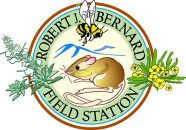The first two volunteer workdays of the spring semester have been all about mustard – specifically two winter-blooming mustards – Brassica tournefortii (Sahara Mustard) and Brasscia fruticulosa (Mediterranean Cabbage).
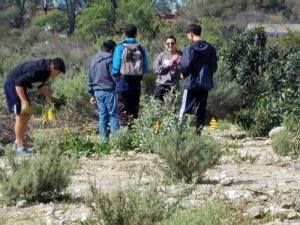
Brassica tournefortii has been discussed before in these pages. This particularly nasty mustard has displaced native vegetation in large areas of Joshua Tree National Park and the Anza Borrego desert. It is thought to have been introduced to Southern California 1920’s in Coachella Valley, where it was likely imported with Date Palms. Since then Brassica tournefortii has been gradually spreading, largely along roads as the seeds stick to automobile and truck tires. It first arrived in the Foothill Blvd parkway in front of the Field Station in 2012. The recent construction activity associated with the Robert Redford Conservancy and the Foothill Blvd project appears to have introduced a lot of B. tournefortii seeds, which germinated profusely after the winter rains, and on January 19 and February 16 volunteers removed thousands of plants from the Foothill Blvd and Mills Ave parkways as well as some areas inside the fence.
Brasscia fruticulosa, another Mediterranean native, is a new addition to our list of targeted invasive plants. It was first reported in Southern California in 1996, and its distribution in California (at least so far) is limited to Los Angeles, Orange, San Bernardino, and Riverside Counties. Because this is a relatively new arrival, it’s not been clear how invasive it will be. It was first noticed at the Field Station in 1998, in an area on the west side of the ‘Neck’ near the Rancho Santa Ana Botanic Garden greenhouses, and there it stayed for a number of years. In the last year or so, however, it seems to be spreading. Four infestations appeared on the east side of the field station, several plants have popped up around the lake, and the plants are spreading out on the west side from the original infestation into the woodland area.
Given the apparent spread, it seemed prudent to remove the Brasscia fruticulosa while the infestations are small enough to control, and we on February 16, volunteers removed all the plants in the four infestations on the east side – along the fence at the southeast corner of the ‘Neck’, just south of the Conservancy building, along the road to the west of the Conservancy south of the Lowell gate, and among the newly planted natives in the restoration project.
Here are a few photos from the February 16 workday…
We were joined for this workday by a terrific crew from the Bonita High Environmental Club:
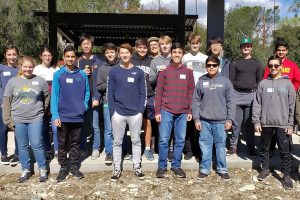
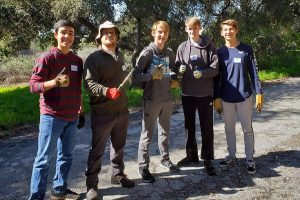
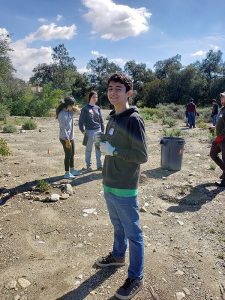
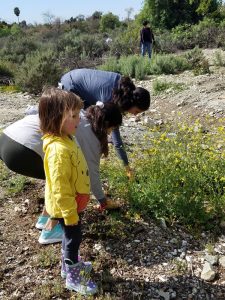
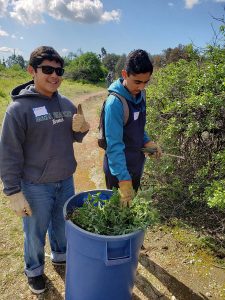
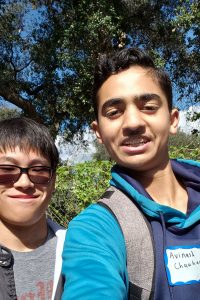
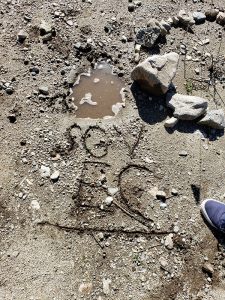
Some before and after photos:
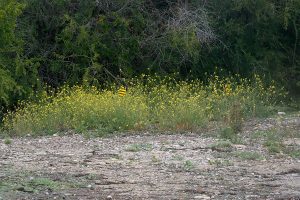
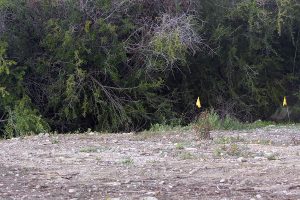
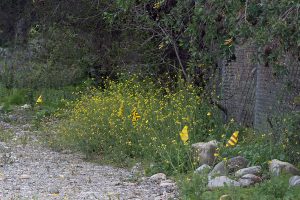
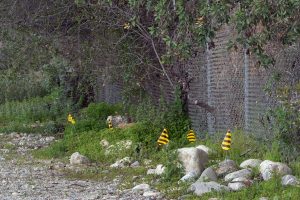
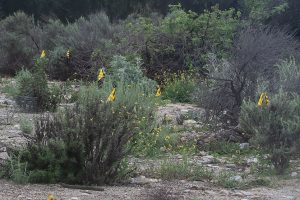
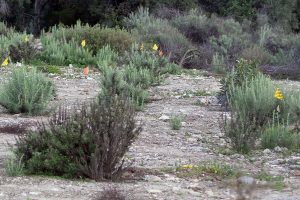
The next volunteer workday is scheduled for March 2, and we will likely be removing more mustard. Please join us if you can!
